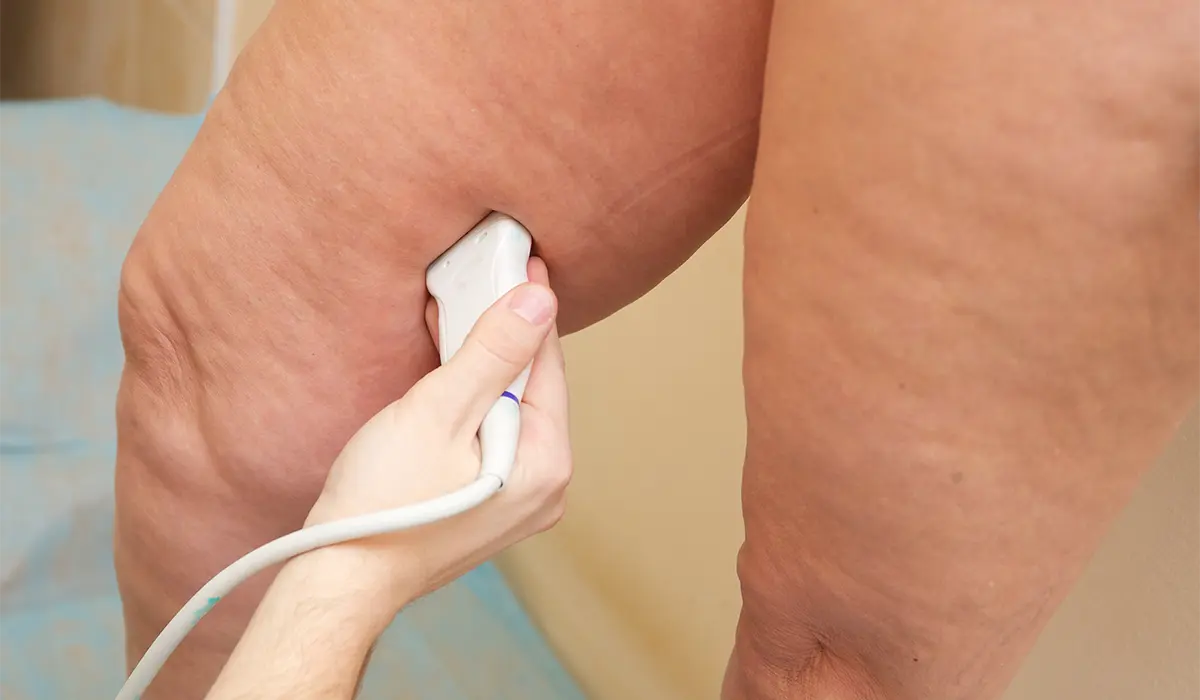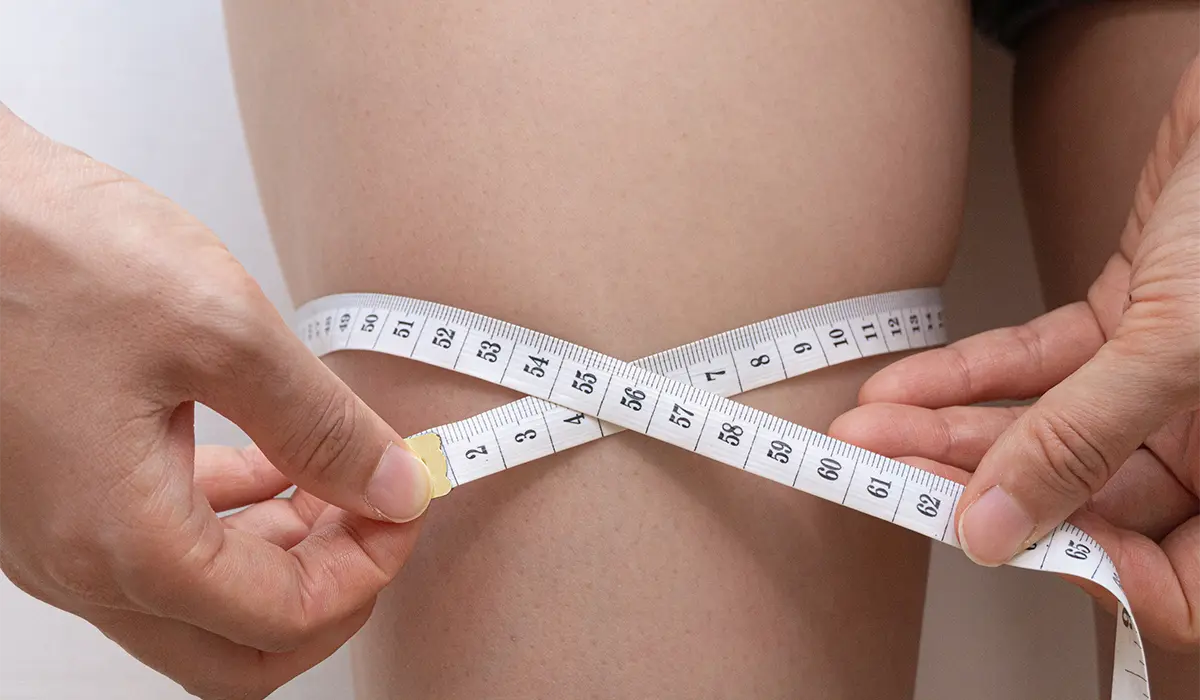
Veins are blood vessels that carry deoxygenated blood back from our body to the heart. These veins have one-way valves inside them. When muscles move, the valves open, and during relaxation, they close, preventing the blood from flowing backward against gravity. However, in diseases that affect the venous system, these valves can be damaged, leading to blood reflux and accumulation in the veins. As a result, various issues can occur, such as burning, aching pain, swelling, and darkening of the skin in the legs, as well as veins becoming enlarged and twisted or the formation of blood clots within the veins. Venous diseases range from simple cosmetic issues (such as spider veins) to life-threatening conditions (like deep vein thrombosis).
Lymphedema
Lymphedema, also commonly known as elephantiasis, is a type of swelling that develops due to lymphatic system disorders. In lymphedema, lymphatic vessels narrow or become blocked; consequently, protein-rich lymph fluid, which normally should be transported to lymph nodes, accumulates in the tissues, causing swelling in the affected area. Lymphedema can be congenital (primary) or acquired (secondary). Primary lymphedema develops due to genetic reasons or structural abnormalities of the lymphatic system, while secondary lymphedema typically occurs after factors such as surgical intervention, radiotherapy, infection, or trauma. For example, the removal of lymph nodes or radiation damage during cancer treatment are among the most common causes of lymphedema.
Lymphedema usually manifests as noticeable swelling in the affected limb (most often an arm or leg). This swelling may initially be edema that increases at the end of the day and partially subsides with rest; however, if left untreated, it becomes permanent and progressive. Key symptoms of lymphedema include:
Swelling: Persistent and progressive swelling occurs in the affected arm or leg.
Pain and restricted movement: Due to swelling, a feeling of heaviness, pain, numbness, and reduced mobility may be observed in the limb. Clothes or jewelry might start to feel tight in that area.
Skin changes: In advanced stages, the skin may harden and thicken, becoming dry and rough; sometimes, discoloration or fibrosis beneath the skin also develops. This makes the skin more susceptible to infections (e.g., cellulitis).
Lymphedema is generally a slow-progressing, chronic disease. While swelling lessens with rest in the early stages, it becomes constant in advanced stages. Therefore, early diagnosis and treatment are crucial. For lymphedema diagnosis, your doctor will assess the degree of swelling, skin texture, and specific findings like Stemmer’s sign during a physical examination. If necessary, imaging methods such as lymphoscintigraphy, MRI, or ultrasound may be used to evaluate lymphatic system function. Once lymphedema is diagnosed, the underlying cause (e.g., infection, tumor) is also investigated, and the treatment plan is tailored accordingly.
Lymphedema treatment is typically carried out through a holistic program known as Complete Decongestive Therapy (CDT). This program includes a combination of methods such as manual lymphatic drainage (draining lymph fluid with special massage techniques), compression therapy (bandaging or special compression garments), appropriate exercises, and skin care. For example, by applying external pressure to the legs through layered elastic bandages or compression devices (devices that apply air pressure with pressotherapy), lymph flow is supported, and swelling is reduced. Patients should also regularly perform exercises taught by their doctor to activate the muscle pump and move the affected limb as much as possible. Keeping the skin moisturized and clean, and promptly treating any cuts or fungal infections, are also important. This can halt the progression of lymphedema, reduce swelling and pain, and improve the patient’s quality of life.
Lipedema

Lipedema is a chronic and progressive fat distribution disorder that primarily affects women. In this condition, there is an uneven accumulation of fat in the lower part of the body, especially around the hips, thighs, legs, and sometimes the arms. In patients with lipedema, the hands and feet are unaffected, meaning there is generally no swelling or edema in the wrists or ankles. This characteristic is one of the key differences that separates lipedema from lymphedema. Fat accumulation occurs symmetrically in both legs, and regardless of how much weight a person loses, their legs may remain disproportionately thick. Lipedema typically emerges or worsens during periods of hormonal changes such as puberty, pregnancy, or menopause. Although the exact cause of this condition is not fully understood, genetic predisposition and hormonal factors are believed to play a role.
Symptoms of lipedema usually progress slowly and may not be immediately noticeable. Patients often notice an asymmetric thickening of the thighs and legs without any corresponding thinning. Pain and tenderness to touch are common in the lipedema-affected areas, and hard nodules and pain may be felt beneath the skin when pressure is applied. Furthermore, due to the fragility of capillaries in this area, easy bruising is commonly observed. In later stages, fat accumulation and edema can increase to the point where the patient’s ability to walk is affected. Lipedema can also lead to psychosocial effects: the patient may experience a loss of self-confidence, embarrassment, anxiety, and depression due to the appearance of their legs. Until recently, lipedema was a difficult-to-diagnose condition often confused with obesity or lymphedema. However, as awareness has increased, more women are seeking medical help for this issue. According to studies, approximately 10-11% of women may have lipedema, indicating that this is a relatively common condition, showing that lipedema is actually a more frequent problem than we thought.
Unfortunately, lipedema is not a completely curable condition, but its symptoms can be managed and its progression can be slowed. In lipedema treatment, the primary goal is to improve the patient’s quality of life and reduce pain. Weight control and balanced nutrition are important for this purpose; maintaining a healthy diet helps prevent further fat accumulation. However, since it is usually not possible to reduce the fat tissue in lipedema-affected areas solely through diet or exercise, supportive treatments come into play. Compression stockings or bandages are especially recommended for the legs – these special garments help reduce swelling and pain. Similar to lymphedema, manual lymph drainage massages can help alleviate edema by increasing fluid circulation in the legs. Low-impact exercises such as swimming, walking, or cycling are suggested to reduce pain and tenderness. In advanced cases where conservative methods fail to control the condition, surgical options may be considered. Specifically, liposuction of lipedema fat can help reduce leg circumference and provide relief. These surgeries are performed with special techniques (such as water-assisted or tumescent liposuction) and are typically used for patients in advanced stages. After the procedure, the patient’s continued use of compression garments and exercise is crucial for long-term success.
Conclusion
Although lymphedema and lipedema have different mechanisms, both are important conditions that require early diagnosis and appropriate treatment. Raising awareness about these conditions, recognizing the symptoms early, and taking preventive measures before progression is crucial. Remember, early intervention can improve your quality of life. If you notice any abnormal swelling, pain, or changes in the shape of your legs or arms, don’t hesitate to consult a specialist. Our clinic offers experienced care for the diagnosis and treatment of lymphedema and lipedema. Take a step for your health; contact our clinic now for more information and to schedule an appointment.
Lipedema and Lymphedema - FAQs
What is Lipedema?
Lipedema is a painful and progressive condition characterized by symmetric fat accumulation, typically in the legs and sometimes in the arms. It does not improve with weight loss and is often mistakenly confused with obesity or lymphedema.
What is the difference between Lipedema and Lymphedema?
In lipedema, fat accumulates symmetrically, while in lymphedema, fluid accumulation is usually unilateral and gravity-dependent. In lymphedema, the feet are often affected, whereas in lipedema, the feet generally remain unaffected.
What causes Lipedema?
Although the exact cause is unknown, lipedema is thought to be influenced by genetic and hormonal factors, particularly during hormonal transition periods such as puberty, pregnancy, and menopause.
What are the symptoms of Lipedema?
Thick, symmetrical thighs and/or arms
Pain when pressure is applied and tenderness to touch
Tendency to bruise
Feet and wrists remaining thin
Fat tissue resistant to diet
How is Lipedema diagnosed?
The diagnosis is based on physical examination and the patient’s complaint history. Ultrasound or lymphoscintigraphy may assist in distinguishing lipedema from lymphedema. It is important to provide accurate evaluation, especially in patients who have been misdiagnosed.
How is Lipedema treated?
Treatment requires a multidisciplinary approach:
Compression garments
Lymphatic drainage massages
Nutrition and exercise plan (focused on anti-inflammatory)
Surgical options, such as liposuction (water-assisted or laser-supported) if necessary
What is Lymphedema and how is it treated?
Lymphedema is a condition where lymph fluid accumulates within the tissue, causing swelling. Treatment includes manual lymph drainage, multi-layer compression bandaging, exercise, and device-assisted therapy.
What is a Compression Bandage?
A multi-layer compression bandage is a medical dressing system that distributes pressure in a controlled manner. It is primarily used in the treatment of venous ulcers and lymphedema.


